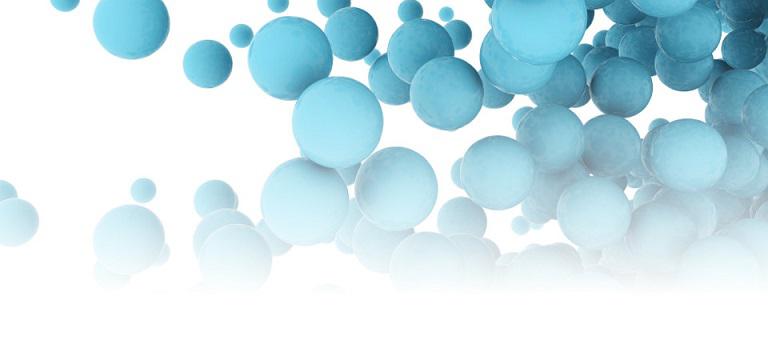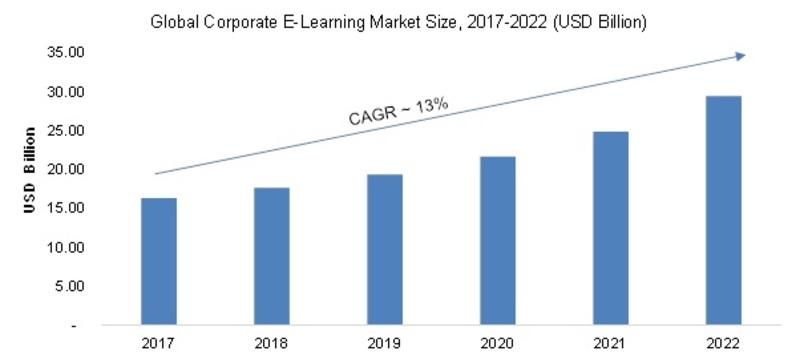Press release
Diisocyanates Manufacturing Plant Project Report 2024: Machinery and Raw Materials
IMARC Group's report, "Diisocyanates Manufacturing Plant Project Report 2024: Industry Trends, Plant Setup, Machinery, Raw Materials, Investment Opportunities, Cost and Revenue," offers a comprehensive guide for establishing a manufacturing plant. The diisocyanates manufacturing plant report offers insights into the manufacturing process, financials, capital investment, expenses, ROI, and more for informed business decisions.
Diisocyanates Manufacturing Plant Project Report Summary: -
• Comprehensive guide for setting up a diisocyanates manufacturing plant.
• Covers market trends and industry outlook for 2024.
• Detailed project setup, including unit operations and processes.
• Raw material and utility requirements.
• Infrastructure and machinery specifications.
• Workforce and staffing requirements.
• Packaging and transportation details.
• Financial aspects: investment opportunities, cost analysis, and revenue projections.
In addition to covering operational aspects, the report offers detailed insights into the diisocyanates manufacturing plant process and project economics.
• Detailed insights into the diisocyanates manufacturing plant process.
• In-depth project economics and financial metrics.
• Covers capital investments and project funding.
• Analysis of operating expenses and income projections.
• Breakdown of fixed and variable costs, direct and indirect expenses.
• Evaluation of ROI (Return on Investment) and NPV (Net Present Value).
• Profit and Loss account analysis.
• Comprehensive financial analysis for decision-making.
• Provides a roadmap for successfully establishing a diisocyanates manufacturing unit.
Request for a Sample Report: https://www.imarcgroup.com/diisocyanates-manufacturing-plant-project-report/requestsample
What is Diisocyanates ?
Diisocyanates are organic compounds containing two isocyanate (-NCO) groups, primarily used in the production of polyurethane materials. They are synthesized through the reaction of amines with phosgene in a controlled environment, resulting in high-purity compounds essential for industrial applications. Additionally, key types include toluene diisocyanate (TDI), methylene diphenyl diisocyanate (MDI), and aliphatic diisocyanates like hexamethylene diisocyanate (HDI), each offering distinct chemical properties tailored to specific uses. Diisocyanates are pivotal in manufacturing flexible and rigid polyurethane foams, coatings, adhesives, sealants, and elastomers, driving innovation in industries like construction, automotive, and furniture. Moreover, their versatility stems from their ability to react with polyols, enabling the creation of materials with varied properties such as resilience, insulation, and strength. The benefits of diisocyanates include enhanced product performance, lightweight properties, and energy efficiency in applications such as thermal insulation. Besides this, stringent safety measures are essential during handling due to potential health risks, reinforcing the importance of regulatory compliance in their use.
Market Trends and Drivers:
The diisocyanates market is being driven by the growing demand for polyurethane materials across various industries, including construction, automotive, furniture, and electronics. In construction, the increasing focus on energy-efficient buildings has boosted the demand for polyurethane-based insulation materials, particularly rigid foams. The automotive sector is leveraging diisocyanates for lightweight materials that improve fuel efficiency and reduce emissions, aligning with global sustainability goals. Additionally, the rising need for durable and high-performance coatings and adhesives in industrial applications is expanding the market. The growing adoption of polyurethane elastomers in manufacturing seals, gaskets, and other components further contributes to market growth. Technological advancements in production processes are enhancing efficiency and reducing environmental impact, appealing to industries aiming for sustainable practices. Furthermore, the increasing focus on renewable feedstocks for diisocyanate production is fostering innovation, meeting regulatory requirements, and addressing environmental concerns. Moreover, the expansion of consumer electronics and appliances is another key factor, as polyurethane components ensure durability and performance.
Key Insights Covered in the Diisocyanates Manufacturing Plant Report
Market Coverage:
• Market Trends: Analysis of current and emerging trends in the diisocyanates manufacturing market.
• Market Segmentation: Breakdown of the market by different segments.
• Regional Analysis: Distribution and performance of the market across various regions.
• Price Analysis: Evaluation of pricing trends for diisocyanates manufacturing.
• Impact of COVID-19: Examination of the effects of the COVID-19 pandemic on the diisocyanates market.
• Market Forecast: Outlook and projections for the diisocyanates manufacturing industry.
Key Aspects Required for Setting Up a Diisocyanates Plant
Detailed Process Flow:
• Product Overview: Comprehensive description of the diisocyanates manufacturing product and its characteristics.
• Unit Operations Involved: Step-by-step breakdown of the various operations in the production process.
• Mass Balance and Raw Material Requirements: Calculations for material inputs and outputs, along with required quantities of raw materials.
• Quality Assurance Criteria: Standards and procedures to ensure the quality of the final product.
• Technical Tests: Essential tests and evaluations to maintain product consistency and compliance.
Project Details, Requirements, and Costs Involved
• Land, Location, and Site Development: Assessment of land requirements, optimal location selection, and site development costs.
• Plant Layout: Design and layout planning for efficient plant operations.
• Machinery Requirements and Costs: Identification of machinery needed, along with the associated costs.
• Raw Material Requirements and Costs: Determination of the types and quantities of raw materials required and their costs.
• Packaging Requirements and Costs: Specifications for packaging materials and equipment, including associated expenses.
• Transportation Requirements and Costs: Logistics planning and cost estimation for the transportation of raw materials and finished products.
• Utility Requirements and Costs: Analysis of utility needs (such as water, electricity, and fuel) and their associated costs.
• Human Resource Requirements and Costs: Workforce planning, including staffing needs, roles, and costs for labor and management.
Buy Now: https://www.imarcgroup.com/checkout?id=10399&method=402
Project Economics
• Capital Investments: Initial costs required for setting up the diisocyanates manufacturing plant, including land, equipment, and infrastructure.
• Operating Costs: Ongoing expenses for running the plant, such as raw materials, labor, utilities, and maintenance.
• Expenditure Projections: Detailed forecasts of all costs over the short and long term.
• Revenue Projections: Expected income generated from the sale of diisocyanates manufacturing and by-products.
• Taxation and Depreciation: Analysis of tax obligations, incentives, and asset depreciation over time.
• Profit Projections: Estimated profitability based on costs, revenues, and market conditions.
• Financial Analysis: Comprehensive evaluation of the plant's financial viability, including cash flow analysis, return on investment (ROI), and break-even point.
Ask Analyst for Customization: https://www.imarcgroup.com/request?type=report&id=10399&flag=C
Customization Options Available:
• Plant Location: Selection of optimal location for the plant.
• Plant Capacity: Customization based on desired production capacity.
• Machinery: Choice between automatic, semi-automatic, or manual machinery.
• List of Machinery Providers: Identification of suitable machinery suppliers.
Key Questions Addressed in This Report:
• How has the diisocyanates manufacturing market performed so far and how will it perform in the coming years?
• What is the market segmentation of the global diisocyanates manufacturing market?
• What is the regional breakup of the global diisocyanates manufacturing market?
• What are the price trends of various feedstocks in the diisocyanates manufacturing industry?
• What is the structure of the diisocyanates manufacturing industry and who are the key players?
• What are the various unit operations involved in a diisocyanates manufacturing plant?
• What is the total size of land required for setting up a diisocyanates manufacturing plant?
• What is the layout of a diisocyanates manufacturing plant?
• What are the machinery requirements for setting up a diisocyanates manufacturing plant?
• What are the raw material requirements for setting up a diisocyanates manufacturing plant?
How IMARC Can Help?
IMARC Group is a global management consulting firm that helps the world's most ambitious changemakers to create a lasting impact. The company provide a comprehensive suite of market entry and expansion services. IMARC offerings include thorough market assessment, feasibility studies, company incorporation assistance, factory setup support, regulatory approvals and licensing navigation, branding, marketing and sales strategies, competitive landscape and benchmarking analyses, pricing and cost research, and procurement research.
Services:
• Plant Setup
• Factoring Auditing
• Regulatory Approvals, and Licensing
• Company Incorporation
• Incubation Services
• Recruitment Services
• Marketing and Sales
Contact Us:
IMARC Group
134 N 4th St. Brooklyn, NY 11249, USA
Email: sales@imarcgroup.com
Tel No:(D) +91 120 433 0800
United States: +1-631-791-1145
About Us:
IMARC Group is a leading market research company that offers management strategy and market research worldwide. We partner with clients in all sectors and regions to identify their highest-value opportunities, address their most critical challenges, and transform their businesses.
IMARC's information products include major market, scientific, economic and technological developments for business leaders in pharmaceutical, industrial, and high technology organizations. Market forecasts and industry analysis for biotechnology, advanced materials, pharmaceuticals, food and beverage, travel and tourism, nanotechnology and novel processing methods are at the top of the company's expertise.
Diisocyanates Manufacturing Plant Project Report Summary: -
• Comprehensive guide for setting up a diisocyanates manufacturing plant.
• Covers market trends and industry outlook for 2024.
• Detailed project setup, including unit operations and processes.
• Raw material and utility requirements.
• Infrastructure and machinery specifications.
• Workforce and staffing requirements.
• Packaging and transportation details.
• Financial aspects: investment opportunities, cost analysis, and revenue projections.
In addition to covering operational aspects, the report offers detailed insights into the diisocyanates manufacturing plant process and project economics.
• Detailed insights into the diisocyanates manufacturing plant process.
• In-depth project economics and financial metrics.
• Covers capital investments and project funding.
• Analysis of operating expenses and income projections.
• Breakdown of fixed and variable costs, direct and indirect expenses.
• Evaluation of ROI (Return on Investment) and NPV (Net Present Value).
• Profit and Loss account analysis.
• Comprehensive financial analysis for decision-making.
• Provides a roadmap for successfully establishing a diisocyanates manufacturing unit.
Request for a Sample Report: https://www.imarcgroup.com/diisocyanates-manufacturing-plant-project-report/requestsample
What is Diisocyanates ?
Diisocyanates are organic compounds containing two isocyanate (-NCO) groups, primarily used in the production of polyurethane materials. They are synthesized through the reaction of amines with phosgene in a controlled environment, resulting in high-purity compounds essential for industrial applications. Additionally, key types include toluene diisocyanate (TDI), methylene diphenyl diisocyanate (MDI), and aliphatic diisocyanates like hexamethylene diisocyanate (HDI), each offering distinct chemical properties tailored to specific uses. Diisocyanates are pivotal in manufacturing flexible and rigid polyurethane foams, coatings, adhesives, sealants, and elastomers, driving innovation in industries like construction, automotive, and furniture. Moreover, their versatility stems from their ability to react with polyols, enabling the creation of materials with varied properties such as resilience, insulation, and strength. The benefits of diisocyanates include enhanced product performance, lightweight properties, and energy efficiency in applications such as thermal insulation. Besides this, stringent safety measures are essential during handling due to potential health risks, reinforcing the importance of regulatory compliance in their use.
Market Trends and Drivers:
The diisocyanates market is being driven by the growing demand for polyurethane materials across various industries, including construction, automotive, furniture, and electronics. In construction, the increasing focus on energy-efficient buildings has boosted the demand for polyurethane-based insulation materials, particularly rigid foams. The automotive sector is leveraging diisocyanates for lightweight materials that improve fuel efficiency and reduce emissions, aligning with global sustainability goals. Additionally, the rising need for durable and high-performance coatings and adhesives in industrial applications is expanding the market. The growing adoption of polyurethane elastomers in manufacturing seals, gaskets, and other components further contributes to market growth. Technological advancements in production processes are enhancing efficiency and reducing environmental impact, appealing to industries aiming for sustainable practices. Furthermore, the increasing focus on renewable feedstocks for diisocyanate production is fostering innovation, meeting regulatory requirements, and addressing environmental concerns. Moreover, the expansion of consumer electronics and appliances is another key factor, as polyurethane components ensure durability and performance.
Key Insights Covered in the Diisocyanates Manufacturing Plant Report
Market Coverage:
• Market Trends: Analysis of current and emerging trends in the diisocyanates manufacturing market.
• Market Segmentation: Breakdown of the market by different segments.
• Regional Analysis: Distribution and performance of the market across various regions.
• Price Analysis: Evaluation of pricing trends for diisocyanates manufacturing.
• Impact of COVID-19: Examination of the effects of the COVID-19 pandemic on the diisocyanates market.
• Market Forecast: Outlook and projections for the diisocyanates manufacturing industry.
Key Aspects Required for Setting Up a Diisocyanates Plant
Detailed Process Flow:
• Product Overview: Comprehensive description of the diisocyanates manufacturing product and its characteristics.
• Unit Operations Involved: Step-by-step breakdown of the various operations in the production process.
• Mass Balance and Raw Material Requirements: Calculations for material inputs and outputs, along with required quantities of raw materials.
• Quality Assurance Criteria: Standards and procedures to ensure the quality of the final product.
• Technical Tests: Essential tests and evaluations to maintain product consistency and compliance.
Project Details, Requirements, and Costs Involved
• Land, Location, and Site Development: Assessment of land requirements, optimal location selection, and site development costs.
• Plant Layout: Design and layout planning for efficient plant operations.
• Machinery Requirements and Costs: Identification of machinery needed, along with the associated costs.
• Raw Material Requirements and Costs: Determination of the types and quantities of raw materials required and their costs.
• Packaging Requirements and Costs: Specifications for packaging materials and equipment, including associated expenses.
• Transportation Requirements and Costs: Logistics planning and cost estimation for the transportation of raw materials and finished products.
• Utility Requirements and Costs: Analysis of utility needs (such as water, electricity, and fuel) and their associated costs.
• Human Resource Requirements and Costs: Workforce planning, including staffing needs, roles, and costs for labor and management.
Buy Now: https://www.imarcgroup.com/checkout?id=10399&method=402
Project Economics
• Capital Investments: Initial costs required for setting up the diisocyanates manufacturing plant, including land, equipment, and infrastructure.
• Operating Costs: Ongoing expenses for running the plant, such as raw materials, labor, utilities, and maintenance.
• Expenditure Projections: Detailed forecasts of all costs over the short and long term.
• Revenue Projections: Expected income generated from the sale of diisocyanates manufacturing and by-products.
• Taxation and Depreciation: Analysis of tax obligations, incentives, and asset depreciation over time.
• Profit Projections: Estimated profitability based on costs, revenues, and market conditions.
• Financial Analysis: Comprehensive evaluation of the plant's financial viability, including cash flow analysis, return on investment (ROI), and break-even point.
Ask Analyst for Customization: https://www.imarcgroup.com/request?type=report&id=10399&flag=C
Customization Options Available:
• Plant Location: Selection of optimal location for the plant.
• Plant Capacity: Customization based on desired production capacity.
• Machinery: Choice between automatic, semi-automatic, or manual machinery.
• List of Machinery Providers: Identification of suitable machinery suppliers.
Key Questions Addressed in This Report:
• How has the diisocyanates manufacturing market performed so far and how will it perform in the coming years?
• What is the market segmentation of the global diisocyanates manufacturing market?
• What is the regional breakup of the global diisocyanates manufacturing market?
• What are the price trends of various feedstocks in the diisocyanates manufacturing industry?
• What is the structure of the diisocyanates manufacturing industry and who are the key players?
• What are the various unit operations involved in a diisocyanates manufacturing plant?
• What is the total size of land required for setting up a diisocyanates manufacturing plant?
• What is the layout of a diisocyanates manufacturing plant?
• What are the machinery requirements for setting up a diisocyanates manufacturing plant?
• What are the raw material requirements for setting up a diisocyanates manufacturing plant?
How IMARC Can Help?
IMARC Group is a global management consulting firm that helps the world's most ambitious changemakers to create a lasting impact. The company provide a comprehensive suite of market entry and expansion services. IMARC offerings include thorough market assessment, feasibility studies, company incorporation assistance, factory setup support, regulatory approvals and licensing navigation, branding, marketing and sales strategies, competitive landscape and benchmarking analyses, pricing and cost research, and procurement research.
Services:
• Plant Setup
• Factoring Auditing
• Regulatory Approvals, and Licensing
• Company Incorporation
• Incubation Services
• Recruitment Services
• Marketing and Sales
Contact Us:
IMARC Group
134 N 4th St. Brooklyn, NY 11249, USA
Email: sales@imarcgroup.com
Tel No:(D) +91 120 433 0800
United States: +1-631-791-1145
About Us:
IMARC Group is a leading market research company that offers management strategy and market research worldwide. We partner with clients in all sectors and regions to identify their highest-value opportunities, address their most critical challenges, and transform their businesses.
IMARC's information products include major market, scientific, economic and technological developments for business leaders in pharmaceutical, industrial, and high technology organizations. Market forecasts and industry analysis for biotechnology, advanced materials, pharmaceuticals, food and beverage, travel and tourism, nanotechnology and novel processing methods are at the top of the company's expertise.
Permanent link to this press release:
Copy
Please set a link in the press area of your homepage
to this press release on woodPRI. woodPRI disclaims liability for any content contained in
this release.
Recommend

/newsMicroencapsulation Market Deep Analysis on Key Players - Dow Corning, Encapsys, Syngenta Crop Protection, Evonik Industries, 3M and Bayer
Market Study Report Adds Global Microencapsulation Market Size, Status and Forecast 2024 added to its database. The report provides key statistics on the current state of the industry and other analytical data to understand the market.
Extensive research is required for choosing the appropriate cor...

/newsGermany Airbag Market Size 2023: Global Share, Industry And Report Analysis By 2030 | Hyundai Mobis Co., Ltd. Key Safety Systems, Inc. Robert Bosch GmbH
Germany airbag market is expected to grow at a CAGR of around 6% during the forecast period. Germany Airbag Market research report refers to gathering and analyzing significant market data serve as best medium for various industry players to launch novel product or service. It is vital for key firms...

/newsSecurities Brokerages And Stock Exchanges Market Outlook 2021: Big Things are Happening
A new intelligence report released by HTF MI with title "Global Securities Brokerages And Stock Exchanges Market Survey & Outlook" is designed covering micro level of analysis by Insurers and key business segments, offerings and sales channels. The Global Securities Brokerages And Stock Exchange...

/newsRenewable Chemicals Market Emerging Trends and Competitive Landscape Forecast to 2028
The renewable chemicals market was valued at US$ 80,566.30 million in 2021 and is projected to reach US$ 1,76,750.76 million by 2028 it is expected to grow at a CAGR of 11.9% from 2021 to 2028. The research report focuses on the current market trends, opportunities, future potential of the market, a...

/newsHow Coronavirus is Impacting Cold Brew Coffee, Global Market Volume Analysis, Size, Share and Key Trends 2020-2026
"Market Latest Research Report 2020:
Los Angles United States, February 2020: The Cold Brew Coffee market has been garnering remarkable momentum in the recent years. The steadily escalating demand due to improving purchasing power is projected to bode well for the global market. QY Research's lates...

/newsCorporate E-Learning Market - Global Industry Size, Share, Key Players Analysis that are Infor, SkillSoft Corporation, Adrenna, CERTPOINT Systems and others with Regional Forecast to 2022
Overview:
E-Learning is used to enhance the learning procedures for newer job requirements and to make employees sound about the internal and external changes in the market and respective organizations. This method has created considerable differences in the ways of training and developing employee...